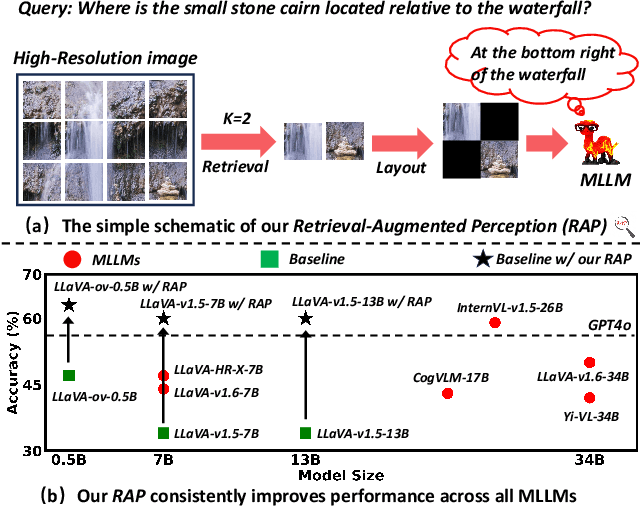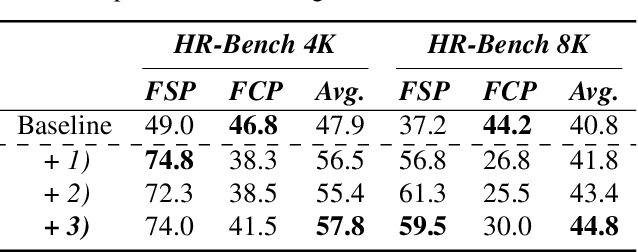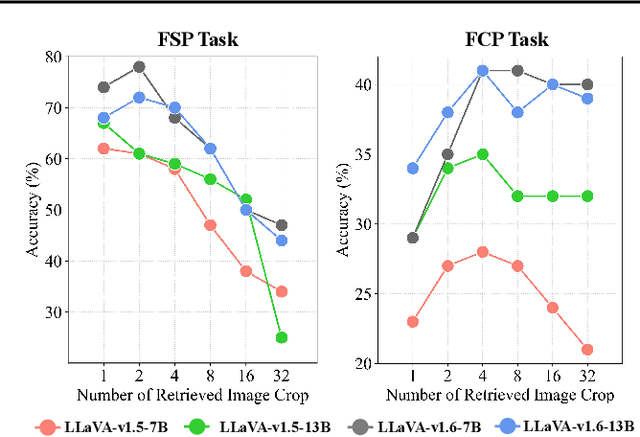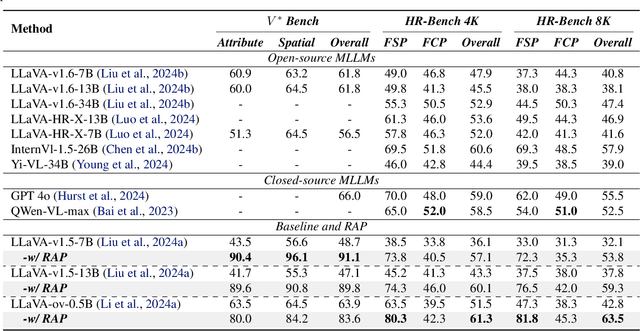Yingjie Wang
CoVeR: Conformal Calibration for Versatile and Reliable Autoregressive Next-Token Prediction
Sep 05, 2025Abstract:Autoregressive pre-trained models combined with decoding methods have achieved impressive performance on complex reasoning tasks. While mainstream decoding strategies such as beam search can generate plausible candidate sets, they often lack provable coverage guarantees, and struggle to effectively balance search efficiency with the need for versatile trajectories, particularly those involving long-tail sequences that are essential in certain real-world applications. To address these limitations, we propose \textsc{CoVeR}, a novel model-free decoding strategy wihtin the conformal prediction framework that simultaneously maintains a compact search space and ensures high coverage probability over desirable trajectories. Theoretically, we establish a PAC-style generalization bound, guaranteeing that \textsc{CoVeR} asymptotically achieves a coverage rate of at least $1 - \alpha$ for any target level $\alpha \in (0,1)$.
Consistent Paths Lead to Truth: Self-Rewarding Reinforcement Learning for LLM Reasoning
Jun 10, 2025Abstract:Recent advances of Reinforcement Learning (RL) have highlighted its potential in complex reasoning tasks, yet effective training often relies on external supervision, which limits the broader applicability. In this work, we propose a novel self-rewarding reinforcement learning framework to enhance Large Language Model (LLM) reasoning by leveraging the consistency of intermediate reasoning states across different reasoning trajectories. Our key insight is that correct responses often exhibit consistent trajectory patterns in terms of model likelihood: their intermediate reasoning states tend to converge toward their own final answers (high consistency) with minimal deviation toward other candidates (low volatility). Inspired by this observation, we introduce CoVo, an intrinsic reward mechanism that integrates Consistency and Volatility via a robust vector-space aggregation strategy, complemented by a curiosity bonus to promote diverse exploration. CoVo enables LLMs to perform RL in a self-rewarding manner, offering a scalable pathway for learning to reason without external supervision. Extensive experiments on diverse reasoning benchmarks show that CoVo achieves performance comparable to or even surpassing supervised RL. Our code is available at https://github.com/sastpg/CoVo.
Multimodal Reasoning Agent for Zero-Shot Composed Image Retrieval
May 26, 2025Abstract:Zero-Shot Composed Image Retrieval (ZS-CIR) aims to retrieve target images given a compositional query, consisting of a reference image and a modifying text-without relying on annotated training data. Existing approaches often generate a synthetic target text using large language models (LLMs) to serve as an intermediate anchor between the compositional query and the target image. Models are then trained to align the compositional query with the generated text, and separately align images with their corresponding texts using contrastive learning. However, this reliance on intermediate text introduces error propagation, as inaccuracies in query-to-text and text-to-image mappings accumulate, ultimately degrading retrieval performance. To address these problems, we propose a novel framework by employing a Multimodal Reasoning Agent (MRA) for ZS-CIR. MRA eliminates the dependence on textual intermediaries by directly constructing triplets, <reference image, modification text, target image>, using only unlabeled image data. By training on these synthetic triplets, our model learns to capture the relationships between compositional queries and candidate images directly. Extensive experiments on three standard CIR benchmarks demonstrate the effectiveness of our approach. On the FashionIQ dataset, our method improves Average R@10 by at least 7.5\% over existing baselines; on CIRR, it boosts R@1 by 9.6\%; and on CIRCO, it increases mAP@5 by 9.5\%.
MLLM-Guided VLM Fine-Tuning with Joint Inference for Zero-Shot Composed Image Retrieval
May 26, 2025Abstract:Existing Zero-Shot Composed Image Retrieval (ZS-CIR) methods typically train adapters that convert reference images into pseudo-text tokens, which are concatenated with the modifying text and processed by frozen text encoders in pretrained VLMs or LLMs. While this design leverages the strengths of large pretrained models, it only supervises the adapter to produce encoder-compatible tokens that loosely preserve visual semantics. Crucially, it does not directly optimize the composed query representation to capture the full intent of the composition or to align with the target semantics, thereby limiting retrieval performance, particularly in cases involving fine-grained or complex visual transformations. To address this problem, we propose MLLM-Guided VLM Fine-Tuning with Joint Inference (MVFT-JI), a novel approach that leverages a pretrained multimodal large language model (MLLM) to construct two complementary training tasks using only unlabeled images: target text retrieval taskand text-to-image retrieval task. By jointly optimizing these tasks, our method enables the VLM to inherently acquire robust compositional retrieval capabilities, supported by the provided theoretical justifications and empirical validation. Furthermore, during inference, we further prompt the MLLM to generate target texts from composed queries and compute retrieval scores by integrating similarities between (i) the composed query and candidate images, and (ii) the MLLM-generated target text and candidate images. This strategy effectively combines the VLM's semantic alignment strengths with the MLLM's reasoning capabilities.
Sparsified-Learning for Heavy-Tailed Locally Stationary Processes
Apr 08, 2025Abstract:Sparsified Learning is ubiquitous in many machine learning tasks. It aims to regularize the objective function by adding a penalization term that considers the constraints made on the learned parameters. This paper considers the problem of learning heavy-tailed LSP. We develop a flexible and robust sparse learning framework capable of handling heavy-tailed data with locally stationary behavior and propose concentration inequalities. We further provide non-asymptotic oracle inequalities for different types of sparsity, including $\ell_1$-norm and total variation penalization for the least square loss.
Benchmarking Reasoning Robustness in Large Language Models
Mar 06, 2025Abstract:Despite the recent success of large language models (LLMs) in reasoning such as DeepSeek, we for the first time identify a key dilemma in reasoning robustness and generalization: significant performance degradation on novel or incomplete data, suggesting a reliance on memorized patterns rather than systematic reasoning. Our closer examination reveals four key unique limitations underlying this issue:(1) Positional bias--models favor earlier queries in multi-query inputs but answering the wrong one in the latter (e.g., GPT-4o's accuracy drops from 75.8 percent to 72.8 percent); (2) Instruction sensitivity--performance declines by 5.0 to 7.5 percent in the Qwen2.5 Series and by 5.0 percent in DeepSeek-V3 with auxiliary guidance; (3) Numerical fragility--value substitution sharply reduces accuracy (e.g., GPT-4o drops from 97.5 percent to 82.5 percent, GPT-o1-mini drops from 97.5 percent to 92.5 percent); and (4) Memory dependence--models resort to guesswork when missing critical data. These findings further highlight the reliance on heuristic recall over rigorous logical inference, demonstrating challenges in reasoning robustness. To comprehensively investigate these robustness challenges, this paper introduces a novel benchmark, termed as Math-RoB, that exploits hallucinations triggered by missing information to expose reasoning gaps. This is achieved by an instruction-based approach to generate diverse datasets that closely resemble training distributions, facilitating a holistic robustness assessment and advancing the development of more robust reasoning frameworks. Bad character(s) in field Abstract.
Retrieval-Augmented Perception: High-Resolution Image Perception Meets Visual RAG
Mar 03, 2025



Abstract:High-resolution (HR) image perception remains a key challenge in multimodal large language models (MLLMs). To overcome the limitations of existing methods, this paper shifts away from prior dedicated heuristic approaches and revisits the most fundamental idea to HR perception by enhancing the long-context capability of MLLMs, driven by recent advances in long-context techniques like retrieval-augmented generation (RAG) for general LLMs. Towards this end, this paper presents the first study exploring the use of RAG to address HR perception challenges. Specifically, we propose Retrieval-Augmented Perception (RAP), a training-free framework that retrieves and fuses relevant image crops while preserving spatial context using the proposed Spatial-Awareness Layout. To accommodate different tasks, the proposed Retrieved-Exploration Search (RE-Search) dynamically selects the optimal number of crops based on model confidence and retrieval scores. Experimental results on HR benchmarks demonstrate the significant effectiveness of RAP, with LLaVA-v1.5-13B achieving a 43% improvement on $V^*$ Bench and 19% on HR-Bench.
Graph-Augmented Reasoning: Evolving Step-by-Step Knowledge Graph Retrieval for LLM Reasoning
Mar 03, 2025



Abstract:Recent large language model (LLM) reasoning, despite its success, suffers from limited domain knowledge, susceptibility to hallucinations, and constrained reasoning depth, particularly in small-scale models deployed in resource-constrained environments. This paper presents the first investigation into integrating step-wise knowledge graph retrieval with step-wise reasoning to address these challenges, introducing a novel paradigm termed as graph-augmented reasoning. Our goal is to enable frozen, small-scale LLMs to retrieve and process relevant mathematical knowledge in a step-wise manner, enhancing their problem-solving abilities without additional training. To this end, we propose KG-RAR, a framework centered on process-oriented knowledge graph construction, a hierarchical retrieval strategy, and a universal post-retrieval processing and reward model (PRP-RM) that refines retrieved information and evaluates each reasoning step. Experiments on the Math500 and GSM8K benchmarks across six models demonstrate that KG-RAR yields encouraging results, achieving a 20.73\% relative improvement with Llama-3B on Math500.
Erasing Without Remembering: Safeguarding Knowledge Forgetting in Large Language Models
Feb 27, 2025



Abstract:In this paper, we explore machine unlearning from a novel dimension, by studying how to safeguard model unlearning in large language models (LLMs). Our goal is to prevent unlearned models from recalling any related memory of the targeted knowledge.We begin by uncovering a surprisingly simple yet overlooked fact: existing methods typically erase only the exact expressions of the targeted knowledge, leaving paraphrased or related information intact. To rigorously measure such oversights, we introduce UGBench, the first benchmark tailored for evaluating the generalisation performance across 13 state-of-the-art methods.UGBench reveals that unlearned models can still recall paraphrased answers and retain target facts in intermediate layers. To address this, we propose PERMU, a perturbation-based method that significantly enhances the generalisation capabilities for safeguarding LLM unlearning.Experiments demonstrate that PERMU delivers up to a 50.13% improvement in unlearning while maintaining a 43.53% boost in robust generalisation. Our code can be found in https://github.com/MaybeLizzy/UGBench.
A Theoretical Perspective: How to Prevent Model Collapse in Self-consuming Training Loops
Feb 26, 2025
Abstract:High-quality data is essential for training large generative models, yet the vast reservoir of real data available online has become nearly depleted. Consequently, models increasingly generate their own data for further training, forming Self-consuming Training Loops (STLs). However, the empirical results have been strikingly inconsistent: some models degrade or even collapse, while others successfully avoid these failures, leaving a significant gap in theoretical understanding to explain this discrepancy. This paper introduces the intriguing notion of recursive stability and presents the first theoretical generalization analysis, revealing how both model architecture and the proportion between real and synthetic data influence the success of STLs. We further extend this analysis to transformers in in-context learning, showing that even a constant-sized proportion of real data ensures convergence, while also providing insights into optimal synthetic data sizing.
 Add to Chrome
Add to Chrome Add to Firefox
Add to Firefox Add to Edge
Add to Edge